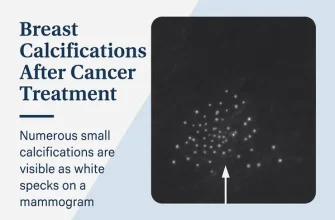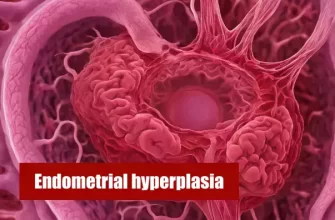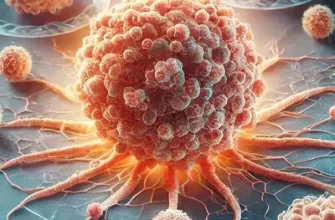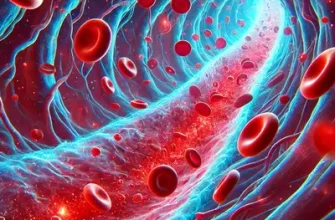When we think about cancer, we often wonder: which type is the hardest to cure? This is not an easy question to answer because cancer is a complex and multifaceted disease. However, there are some types of cancers that are notably more challenging to treat compared to others due to their aggressiveness, late detection, and resistance to treatment.
5-Year Survival Rates for Different Types of Cancer
| Cancer Type | 5-Year Survival Rate (%) |
|---|---|
| Pancreatic Cancer | 12% |
| Glioblastoma | 5% |
| Small Cell Lung Cancer | 7% |
| Breast Cancer | 90% |
This histogram illustrates the 5-year survival rates for different types of cancer. Pancreatic cancer, glioblastoma, and small cell lung cancer have significantly lower survival rates compared to breast cancer, highlighting the challenges in treating these aggressive cancers.
What Makes a Cancer Hard to Cure?
To understand which cancers are the hardest to treat, it’s important to know what makes them so difficult. Factors like rapid cell growth, the ability to spread to other parts of the body (metastasis), and limited treatment options contribute to a poor prognosis. Cancers that are detected at a late stage, for example, have significantly lower survival rates compared to those detected early.
Late-Stage Diagnosis Frequency by Cancer Type
| Cancer Type | Late-Stage Diagnosis Frequency (%) |
|---|---|
| Pancreatic Cancer | 80% |
| Lung Cancer | 70% |
| Colon Cancer | 60% |
| Breast Cancer | 30% |
This histogram shows the frequency of late-stage diagnoses for different types of cancer. Pancreatic and lung cancers are often diagnosed at late stages, making treatment more challenging and reducing survival rates.
Pancreatic Cancer: A Notorious Challenge
Pancreatic cancer is often cited as one of the hardest cancers to cure. But why is that? Pancreatic cancer is notoriously difficult to detect early. The pancreas is located deep inside the body, making tumors hard to notice until they grow large enough to cause symptoms. By the time most pancreatic cancers are diagnosed, they have already spread beyond the pancreas, making treatment more complex.
Statistics from the American Cancer Society show that the 5-year survival rate for pancreatic cancer is just around 12%. This makes it one of the deadliest types of cancer in terms of survival, even with recent advancements in medical treatments.
Did You Know?
Pancreatic cancer is sometimes called the “silent killer” because symptoms such as weight loss, fatigue, or digestive issues often do not appear until advanced stages. (Source: American Cancer Society)
Glioblastoma: An Aggressive Brain Cancer
Another extremely difficult cancer to treat is glioblastoma, an aggressive type of brain tumor. Glioblastomas grow quickly and invade nearby brain tissue, which makes complete surgical removal nearly impossible. These tumors also tend to be resistant to conventional therapies like radiation and chemotherapy.
The average survival time for a patient diagnosed with glioblastoma is about 12-18 months, even with aggressive treatment. Recent advancements in targeted therapy and immunotherapy are ongoing, but the prognosis remains grim.
Interesting Fact
Despite significant research, glioblastomas recur in nearly all patients after initial treatment, largely because of the tumor’s ability to adapt to therapy. (Source: National Cancer Institute)
Lung Cancer: Not Just a Smoker’s Problem
Lung cancer, particularly small cell lung cancer (SCLC), is another type with a very low survival rate. Often associated with smoking, SCLC is highly aggressive and can spread rapidly to other parts of the body. Because of this, many patients are already at an advanced stage at the time of diagnosis.
The 5-year survival rate for small cell lung cancer is only about 7%, which makes it one of the most challenging cancers to treat. However, early detection, particularly with non-small cell lung cancer (NSCLC), can improve outcomes significantly.
Why Are These Cancers So Difficult to Treat?
Several characteristics make cancers like pancreatic cancer, glioblastoma, and small cell lung cancer particularly challenging:
- Late Diagnosis: Many of these cancers are asymptomatic in early stages, which means they are often detected when they are advanced.
- Aggressiveness: Cancers like glioblastoma and SCLC grow and spread quickly, making them harder to control.
- Limited Treatment Options: Some cancers are resistant to traditional therapies, such as chemotherapy or radiation.
New Treatments
Despite the grim outlook for some of these cancers, there is hope. Advances in personalized medicine and immunotherapy have shown promise in treating even the most aggressive cancers. For instance, targeted therapies that attack specific genetic mutations have improved survival rates for some patients with advanced lung cancer.
The use of CAR T-cell therapy, where a patient’s immune cells are modified to attack cancer cells, has also shown early success in treating aggressive cancers. While these treatments are not cures, they represent important steps forward in extending patients’ lives and improving their quality of life.
Success Rates of New Therapies for Hard-to-Treat Cancers
| Therapy Type | Success Rate (%) |
|---|---|
| CAR T-Cell Therapy | 50% |
| Immunotherapy | 35% |
| Targeted Therapy | 45% |
| Checkpoint Inhibitors | 40% |
This histogram illustrates the success rates of new therapies for hard-to-treat cancers. While therapies like CAR T-cell and targeted therapy show promising results, the battle against aggressive cancers continues, and ongoing research is vital for improving these outcomes.
How Does Cost Factor into Treatment?
One factor that is often overlooked is the cost of cancer treatment. New therapies, while promising, can be expensive. A single round of CAR T-cell therapy can cost upwards of $400,000. However, the potential for these therapies to extend lives and even lead to remission makes them invaluable tools in the fight against these devastating diseases.
Expert Opinion: Is There a “Hardest” Cancer?
In reality, every type of cancer presents its own challenges. While pancreatic cancer, glioblastoma, and small cell lung cancer are notoriously difficult to treat, the answer to “what is the hardest cancer to cure?” will vary depending on individual circumstances such as genetics, overall health, and treatment accessibility.
Ultimately, early detection remains key to improving survival outcomes. Regular screenings, awareness of family history, and understanding risk factors can significantly impact survival rates for many cancers.
Editorial Advice: Stay Proactive About Your Health
Our advice is to stay informed and proactive. Early detection saves lives, so regular screenings and paying attention to any changes in your body are crucial. Remember, advances in cancer research mean that even the most difficult cancers are being treated more effectively today than ever before.
If you or a loved one is facing a difficult cancer diagnosis, consult with specialists and consider all available options, including clinical trials. Hope lies not only in the treatments available today but also in the ongoing research that continues to make breakthroughs.









